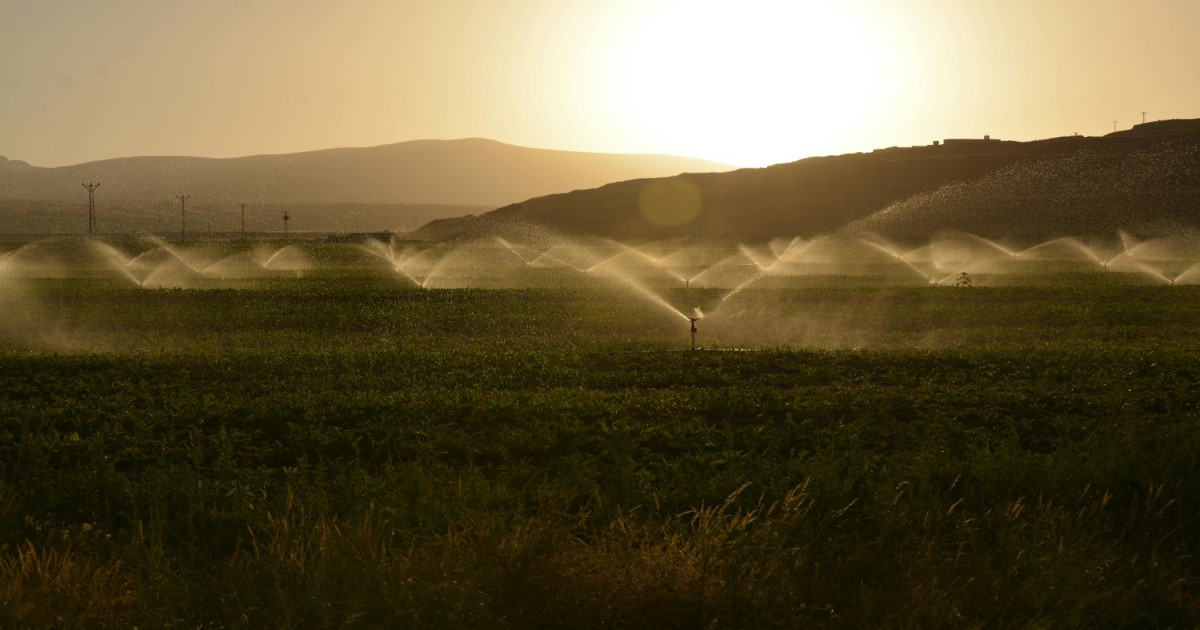Optimizing Crop Water Use: Advances and Applications in Deficit Irrigation Strategies
A special issue of Agronomy (ISSN 2073-4395). This special issue belongs to the section "Water Use and Irrigation".
Deadline for manuscript submissions: 31 July 2025 | Viewed by 5871

Special Issue Editor
Interests: soil-water-plant-atmosphere system; irrigation management; precision irrigation
Special Issues, Collections and Topics in MDPI journals
Special Issue Information
Dear Colleagues,
We would like to invite you to contribute to a Special Issue of Agronomy (MDPI).
The constant search for higher yields and lower production costs is a present objective of 21st century agriculture. A fundamental input to guarantee agricultural production and also increase productivity is water. However, it worth bearing in mind that we can achieve plant production even without soil or substrate (e.g., hydroponics), but it is impossible without water.
Efficient water management in agriculture has always been a priority. Over the years, significant advances have been made in understanding and applying irrigation strategies to overcome water deficits in crops. From traditional practices to modern techniques, the evolution of this field has been remarkable.
The fundamental purpose of this Special Issue is to explore and highlight the latest discoveries and innovations related to optimizing water use in crops, with a special focus on irrigation strategies to address water deficits. We seek to deepen our understanding of how recent research is shaping this vital field, aiming for practical and sustainable advances in agriculture.
We seek research that presents innovative research capable of transforming the way we face the challenges associated with water scarcity in agricultural activities. This may include technological advances, new irrigation methods, forecasting models, or interdisciplinary approaches that integrate science, technology, and agricultural practices.
We encourage the submission of original scientific articles that address the proposed topic. Documents that demonstrate the application of irrigation strategies in conditions of water deficit. We are excited to welcome contributions that drive innovation in this vital field, enabling the scientific and agricultural community to address the growing challenges related to the sustainable use of water in crops. Your participation is crucial for moving towards more efficient and resilient agricultural practices.
Dr. Fernando França da Cunha
Guest Editor
Manuscript Submission Information
Manuscripts should be submitted online at www.mdpi.com by registering and logging in to this website. Once you are registered, click here to go to the submission form. Manuscripts can be submitted until the deadline. All submissions that pass pre-check are peer-reviewed. Accepted papers will be published continuously in the journal (as soon as accepted) and will be listed together on the special issue website. Research articles, review articles as well as short communications are invited. For planned papers, a title and short abstract (about 100 words) can be sent to the Editorial Office for announcement on this website.
Submitted manuscripts should not have been published previously, nor be under consideration for publication elsewhere (except conference proceedings papers). All manuscripts are thoroughly refereed through a single-blind peer-review process. A guide for authors and other relevant information for submission of manuscripts is available on the Instructions for Authors page. Agronomy is an international peer-reviewed open access monthly journal published by MDPI.
Please visit the Instructions for Authors page before submitting a manuscript. The Article Processing Charge (APC) for publication in this open access journal is 2600 CHF (Swiss Francs). Submitted papers should be well formatted and use good English. Authors may use MDPI's English editing service prior to publication or during author revisions.
Keywords
- deficit irrigation
- evapotranspiration
- innovations in water management
- irrigation management
- precision irrigation
- sustainable irrigation strategies
- water optimization
- water productivity
- water use efficiency
Benefits of Publishing in a Special Issue
- Ease of navigation: Grouping papers by topic helps scholars navigate broad scope journals more efficiently.
- Greater discoverability: Special Issues support the reach and impact of scientific research. Articles in Special Issues are more discoverable and cited more frequently.
- Expansion of research network: Special Issues facilitate connections among authors, fostering scientific collaborations.
- External promotion: Articles in Special Issues are often promoted through the journal's social media, increasing their visibility.
- e-Book format: Special Issues with more than 10 articles can be published as dedicated e-books, ensuring wide and rapid dissemination.
Further information on MDPI's Special Issue policies can be found here.





